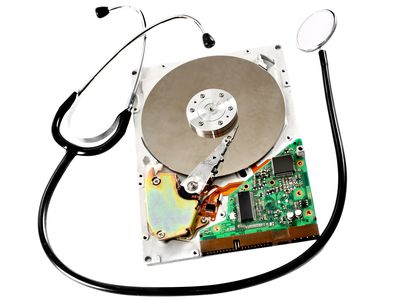
"Digital Choices for Content Creators Sound or Sight Focus"

Digital Choices for Content Creators: Sound or Sight Focus
When choosing which media to use, there are a few different options. In the battle of podcast vs. YouTube, which one would you pick? One or both? You may upload videos on YouTube or create podcasts.
One reason to use Spotify for podcasts is that it’s a global platform, meaning your podcast can be heard by a large audience worldwide.
Spotify is a popular platform, so listeners will likely discover your podcast through them. Putting out a video on YouTube is more work than creating a podcast; however, it may be rewarding. Read and find which one is the best!
A Brief Overview of Podcast vs. YouTube
There’s no denying that YouTube is one of the most popular online platforms. Millions of people use it daily to watch videos on everything from current events to how-to guides.
But YouTube isn’t the only game in town regarding online video.
Podcasts are also becoming increasingly popular, especially among people who commute or have long car journeys. So, which is better - YouTube or podcasts?
There’s a massive range of content available on YouTube. No matter your interests, you’re sure to find something to watch. YouTube videos are usually shorter than podcasts, so they’re perfect for busy people who don’t have time to commit to an extended episode.
You can watch YouTube videos on your phone or tablet, even if you’re not connected to the internet. So it is perfect for when you’re on the go. Now talking about podcasts, they can be downloaded and listened to offline, so you can listen even if you’re not connected to the internet.
The difference between podcasts and YouTube is that Podcasts are usually longer than YouTube videos. So they can be great for getting in-depth information on a topic. In addition, you may listen to podcasts while doing other things, such as driving or cooking.
Lately, investing your time in creating a meaningful video podcast makes more sense. The editing process of a podcast will be simpler than editing a YouTube video. You’ll only have to focus on audio when working on the podcast.
On the other hand, YouTube will require more attention to detail while working on the video, audio, subtitle, and description. Some may simultaneously work on videos and podcasts, creating content for both platforms. Many creators upload videos on YouTube and convert them into podcasts.
| | Podcast | YouTube | |
| ———————————————————- | —————————————————————————————————————————————————– | ———————————————————————————————————————————————————————————————————————————- |
| What is it | Podcasts are audio streaming services that let you listen to episodic content, such as interviews or news reports, on your computer or mobile device. | YouTube is a video-sharing website and online video platform. Users can create and manage their videos or subscribe to other users’ videos. YouTube offers a platform for users to offer advertising revenue-sharing partnerships. |
| The form of content carried | Podcasts have audio content with one or more people speaking. | YouTube has video content with subtitles in different languages. |
| Budget for starting (a YouTube channel or podcast channel) | from $50-$200. | from $150-$500. |
| Editing process | Not that difficult | More complicated |
| Monetization | AdvertisingSell subscriptionsMerchandisingSponsored episodesGiveawayAffiliate | YouTube Partner ProgrammeSponsored videosMerchandisingGiveawayAffiliate |
What Is the Difference Between Podcasts and YouTube?
Podcasts and YouTube are popular audio/video platforms for uploading and consuming content. However, they both have their unique benefits and drawbacks. Here’s a quick rundown of the critical differences between podcasts and YouTube.
You’ll need a steady internet connection and time to watch a YouTube video. Podcasts are more convenient to listen to while doing other things, such as commuting or working out.
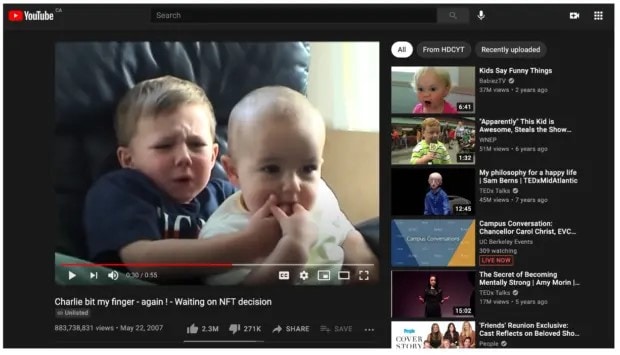
On the downside, podcasts generally don’t have the same production value as YouTube videos, so they can sometimes feel “cheap” or “amateurish.” On the other hand, YouTube videos usually have better production value than podcasts due to content creators’ higher level of investment.
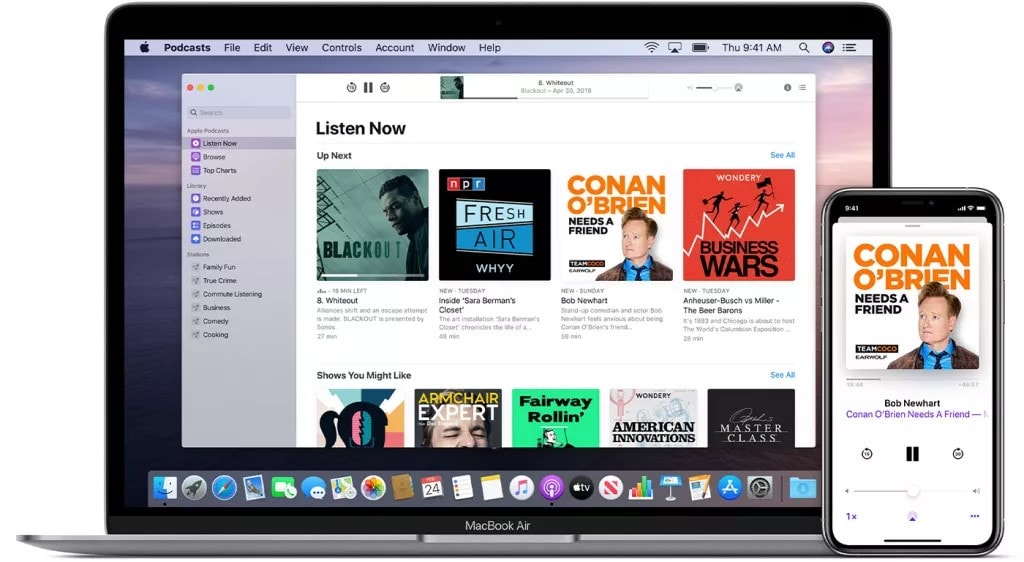
YouTube also offers a more diverse range of content than podcasts since anyone can upload a video. However, YouTube videos can be much more explanatory than podcasts, making them less convenient to consume.
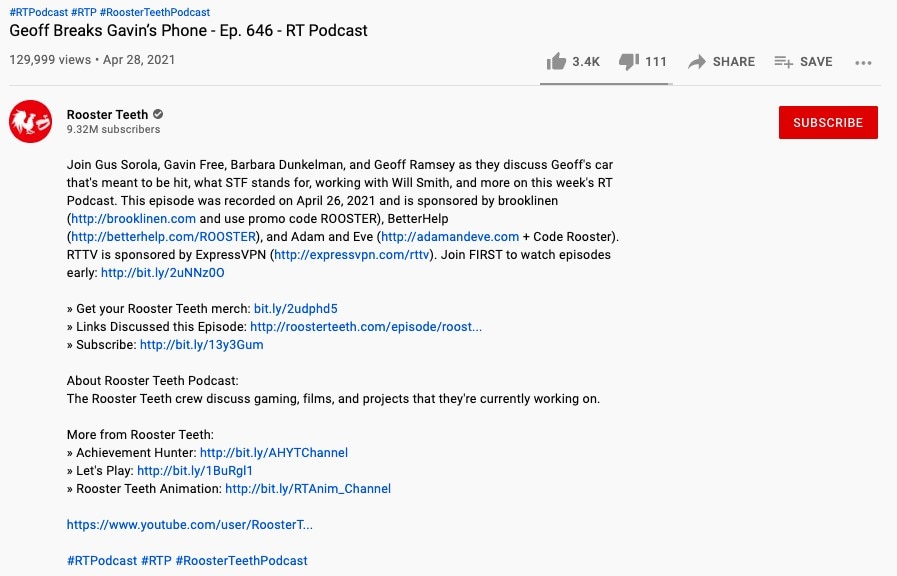
Can You Transform a Podcast Into a YouTube Video or Vice Versa?
Many love podcasts. They have the convenience of being able to create and listen to podcasts on the go. And there are also a lot of people who love YouTube videos. They love the visuals and the ability to watch their favorite videos whenever possible.
So, what if you could combine these two? Can you transform a podcast into a YouTube video or vice versa? It turns out you can! There are a few different options, so you don’t have to choose between a podcast or YouTube.
If you have a podcast that you want to turn into a YouTube video, one option is to record the audio from the podcast and turn it into a video file. You can then upload this video to YouTube and share it.
Another option is to use screen capture software to record your podcast as you’re playing it. This will give you a video of the audio and any visuals that may be part of the show. You can then upload this video to YouTube and share it.
If you have a YouTube video that you want to turn into a podcast, one option is to download the audio from the video and transform it into an MP3 file. You can then share this MP3 file with your favorite podcasting platform.
Another option is to use screen capture software to record the video as you’re playing it. This will give you an audio file of the video and any visuals that may be part of the show. You can then upload this audio file to your favorite podcasting platform and share it with the world.
Lastly, you may present a podcast on your webcam and record the video and audio for YouTube. Meanwhile, use the audio to upload as a podcast. Then, your listeners and viewers can watch the video and listen to the podcast on the go.
And if you have a podcast that’s doing well, you can create a YouTube video series based on it. Alternatively, if you have a popular YouTube channel, you can create a podcast based on your videos.
What Are the Pros & Cons of a YouTube Channel and Podcast Episode
Pros and Cons of a YouTube video:
Pros
- No physical office is required. You can start it from the comforts of your home,
- The startup cost is low.
- You may expand and efficiently control costs by using YouTube channels, which typically have gross margins of around 65%.
- There are no time constraints; devote as much as you have.
- Running requires no second-hand; you can manage it on your own.
- There are several growth opportunities. You can use new features, products, and services for your channel. You may reach all types of clients using various pricing tiers and business strategies.
- No overhead costs; this, too, helps in saving more money.
- There is no upper limit to the sum of money you can make by launching a YouTube channel. The more effort and time you put into your work coupled with your business skills, the more money you’ll earn.
Cons
- It’s a highly competitive field.
- A frequent update is essential to stay relevant to your viewers and google searchers.
- Working alone and having little time for socialization is common for a YouTube channel.
- Self-employment taxes, which can be pretty expensive, are often paid by YouTube channels. To decide whether the work you’re taking on is worthwhile, you need to know how much tax you will have to pay each year.
- No steady paycheck; you are paid based on your monthly viewership.
- Making the same thing repeatedly could seem tedious and repetitious to you. Diversifying your product lines is one approach to preventing this.
- It can get uncomfortable for some people. You may have to make a professional commitment you are unfamiliar with or wouldn’t have done otherwise.
Pros and Cons of a Podcast Episode:
Pros
- You can reach a global audience.
- Podcasts are mobile and can be consumed anywhere.
- They offer on-demand content that listeners can control.
- Podcasts are typically shorter than traditional radio programs, making them more digestible.
- They can be repurposed into other formats, such as blog posts or videos.
Cons
- Producing a high-quality podcast episode requires time and effort.
- Not everyone is familiar with podcasts or knows how to subscribe.
- They can be challenging to market and promote.
- It would help if you had a consistent release schedule to maintain listenership.
- There is a lot of competition in the podcasting space.
Skills You Need
To Start Podcast:
- Invite and interact with guests that your audience will like to listen to
- Ask guests good questions and be a good listener
- Create and upload regular audio content that your listeners wish to listen to
- Know how to edit audio
- Use editing software correctly
- Know how to market Podcasting episodes
To Start YouTube:
- Create a channel and interact with the viewers
- Take criticism with a grain of salt, as viewers will leave comments
- Upload exciting videos with engaging guests
- Edit YouTube video content properly.
- Know how to market your YouTube videos using various platforms
- Network with people in the industry for work collaborations
Equipment for Podcast:
Microphone – $20 to $130
Computer – Free (if you already own one) to $300
Recording and editing software – Free (basic version)
Headphones – $25 to $100
Podcast hosting – Free
The total cost of the startup: $55 to $455
Equipment for YouTube:
Camera – $120 to $500
Microphone – $20 to $130
Tripod or stabilizer – $15 to $150
Lighting – $40 to $200
Editing software – $30 to $200
The total cost of the startup: $200 to $700
Workflow for Making a YouTube Video & Podcast
Workflow for YouTube:
- Choose a title for your video and make notes of the theme.
- Choose a music track for your video.
- Choose a video template or create your own.
- Choose the type of video you want to create: public or private.
- Record and edit the video.
- Select the language and region for your video.
- Upload your video to YouTube.
- Market your video by posting about it on social media platforms.
Workflow for Podcast:
- Choose a topic
- Brainstorm ideas
- Choose a recording gear
- Record and edit your podcast.
- Upload the podcast to Spotify or any other platform.
- Market your podcast and drive listeners from your socials.
Editing Process
YouTube:
- Open the video in a video editor.
- Next, click the “Preferences” button and select the “Editing” tab.
- In the “Editing” tab, you will see different options for adjusting the video.
- The most important option is the “Audio Levels” tab. You will need to adjust the audio levels, so the video sounds clear and loud without being too soft.
- Another important option is the “Video Levels” tab. You will need to adjust the video’s brightness, contrast, and saturation.
- Finally, you will need to adjust the audio tracks and subtitles.
Podcast:
- Once you have a sound recording, it’s time to edit it.
- Adjust levels, fix background noise, and remove unwanted sounds.
- Use compression and EQ (equalization) to make the audio more listener-friendly.
- Take the raw audio material and turn it into an episode that listeners will enjoy.
- You may employ common techniques, including cutting scenes, adding music, and creating voiceovers.
If you are stuck in the editing stage for one episode of your podcasts or a vlog, you may need to try Wondershare Filmora . Filmora offers several hotkey commands for quick editing. In addition, it has features such as audio ducking to remove background noises from your videos and podcasts.
Free Download For Win 7 or later(64-bit)
Free Download For macOS 10.14 or later
- Create eye-catchy podcast videos by adding adorable animations using an advanced keyframing tool.
- Over 2000+ audio resources range from music, audio effects and lots more.
- Support speech-to-text that allows smooth conversion of voiceover to text.
- Audio ducking to quickly eliminate background noise and unwanted sound recorded while creating podcasts.
How to Edit Podcasts or YouTube Videos With Filmora
Step1 Download and open Filmora on your PC or Mac. You can “Create a New Project” to start.
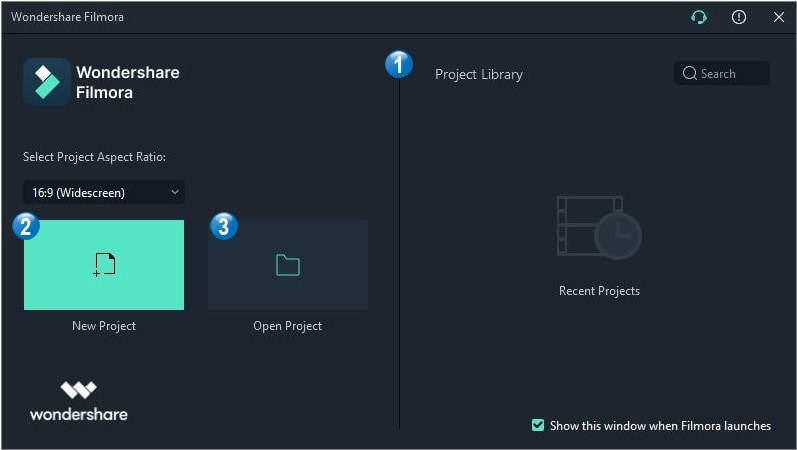
Step2 The editing interface you’ll see when you open Filmora. Import your clips or audio files that need to be edited via the media panel.
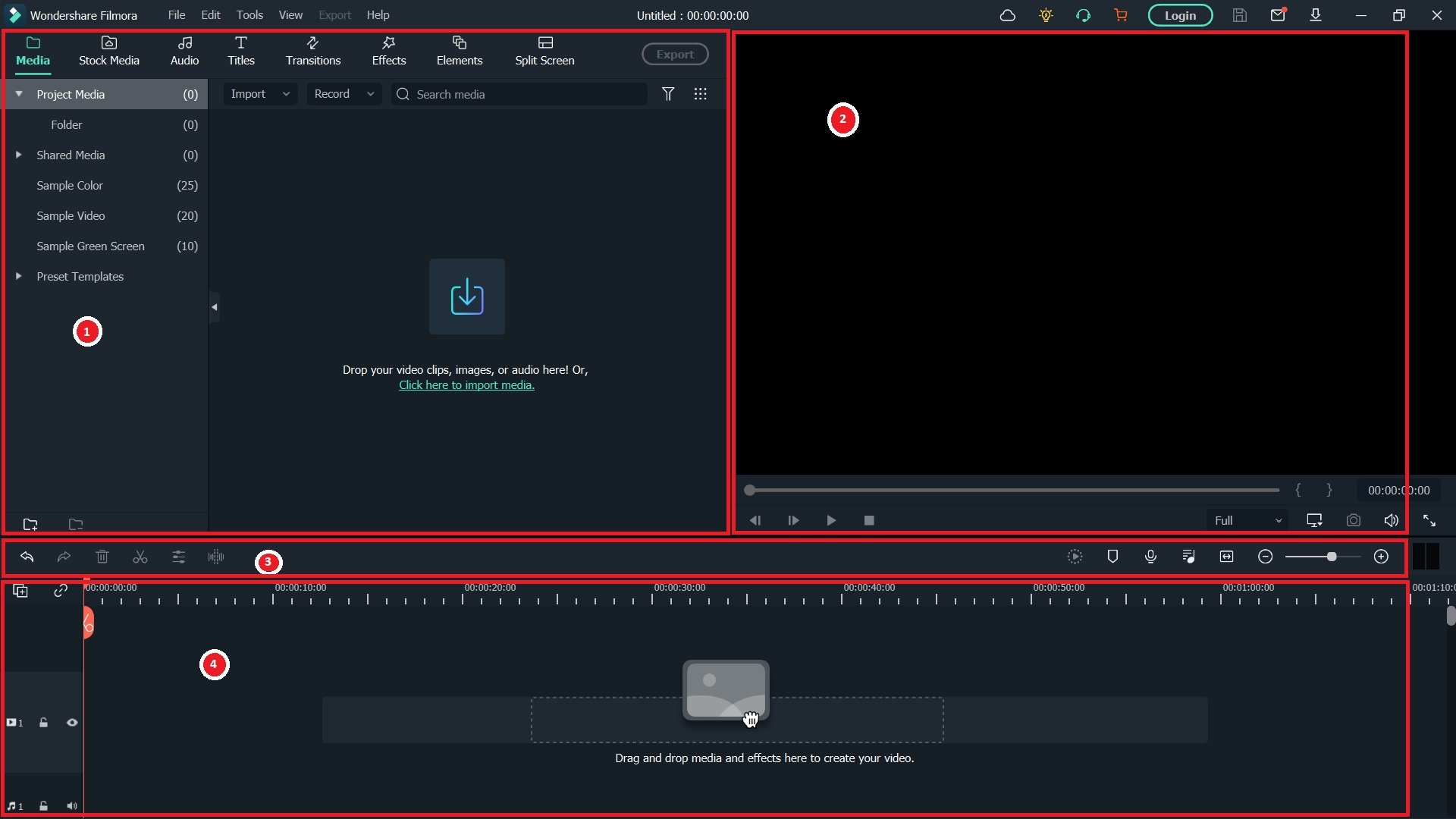
Step3 There are a lot of features and resources for your video, and audio editing, like audio effects, AI audio stretch, auto reframe, audio visualizers, etc.
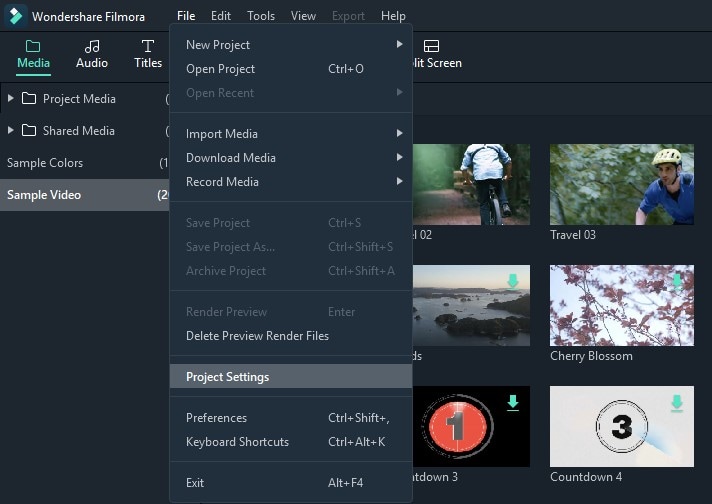
Step4 After editing, you can head to the export button. Save your file into the local folders or directly share them on social media.
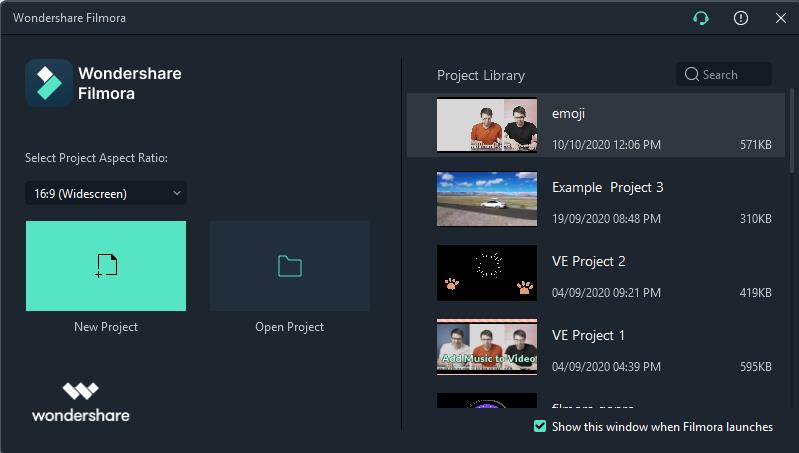
Monetization
You can monetize your YouTube videos and podcast episodes in a few different ways. One way is to use Google AdSense. With AdSense, you can place ad units on your videos and earn money based on the traffic your videos generate.
Another way to monetize your content is by selling products or services through videos and podcasts. For example, you can use a platform like Gumroad to sell digital products or a service like Patreon to sell memberships or access exclusive content.
You can also use your YouTube channel and podcast to drive your website or blog traffic. You can then monetize your website or blog through advertising, affiliate marketing, or selling products and services.
Whatever approach you take, make sure that you are providing value to your audience. For example, if your videos and podcasts are helpful and informative, people will be more likely to watch and listen, and you’ll be more likely to monetize your content successfully.
Podcast vs. YouTube: What Are the Current Industry Trends
The current industry trends for podcasts vs. YouTube are different. To know which is better, podcast or YouTube, you may have to learn about the statistics. Podcasts are seeing a resurgence in popularity, while YouTube is still the top video site in the world. About 383.7 million podcast listeners globally as of November 2022.
Out of these podcast listeners, 50% are between 12-34 in age, and 43% are between 35-54 in age. In Canada, 1 in 3 people listens to a podcast. The country recorded the highest viewership in the world in 2022. Australian and US podcast listeners are at the top in 2022.
This number is at 2.1 billion monthly active users for YouTube based all around the world. The global audience of 95% of YouTube viewers is adults between 18 and 29.
Talking about ads, 80% of podcast listeners believe product ads in a podcast lead to purchase. YouTube also has massive ad growth of 5% ad revenue growth to $7.3 billion in the second quarter of 2022.
Opportunities & Challenges for Podcasts and YouTube
There are many opportunities and challenges for creating podcasts and YouTube videos. Podcasts can be a great way to share your knowledge and stories with others while also building an audience.
However, making an exciting podcast is tricky, and creating a good one takes time and effort. One of the biggest challenges is finding a good topic. In addition, you need to be passionate about what you’re talking about if you want your podcast to be successful.
Another challenge is finding the right audio or video equipment. If you don’t have the right tools, your podcast will sound poor, and your videos will look amateurish. In addition, many podcasters and YouTubers may struggle to edit videos initially. As a result, people don’t spend much time on their channels.
There are also many opportunities for making money from podcasts and YouTube videos. For example, you can sell advertising space, sell merchandise, or get sponsorships. Furthermore, you may get famous and get invited to events.
Key Factors to Consider When Deciding How to Share Content
When it comes to deciding how to share your content on podcast vs. YouTube, there are a few things you’ll want to consider.
- What’s the goal? The first thing you’ll want to determine is the goal of sharing your content. Are you looking to build an audience for your podcast or video channel, generate leads for your business, or simply leave a meaningful legacy behind?
- The second factor you’ll want to consider is your audience size and engagement. How many people will actually listen to or watch your content? And how engaged are they with it? Do they regularly share it on social media or respond positively to reviews?
- What format should your content be in? For example, should it be an audio-only podcast, a video-only channel, or a mixture of both? And what style should it be in – formal or informal?
- You’ll need to ensure that your content is creative and innovative. Is something unique about your topic that will make it stand out from the crowd? Or do you have new ideas that could be valuable for others to learn about?
- Pick the right niche. For example, a cooking show may not work well as a podcast, but it could be great as a YouTube series.
- You’ll want to promote your content in the appropriate channels. If you’re creating a YouTube series based on your podcast, promote it on your podcast platform and your YouTube channel.
- Focus on building skills. If your current skill level is at a beginner level, you may do well making less complex videos and podcasts. Using tools such as Filmora may help you create and edit videos.
- How you create and promote content may also depend on your budget. So be mindful of your budget and expand when you receive the proper engagement.
Final Words
So, which is excellent in the battle of podcast vs. YouTube video? That depends on your personal preferences. If you’d like to create in-depth, topic-focused content, podcasts are probably a better choice.
If you prefer to create playful and exciting content, then vlogs might be more your thing. Ultimately, it’s up to you to decide which format you prefer. You may start with the easier one and learn how to create both podcasts and YouTube videos simultaneously.
What Is the Difference Between Podcasts and YouTube?
Podcasts and YouTube are popular audio/video platforms for uploading and consuming content. However, they both have their unique benefits and drawbacks. Here’s a quick rundown of the critical differences between podcasts and YouTube.
You’ll need a steady internet connection and time to watch a YouTube video. Podcasts are more convenient to listen to while doing other things, such as commuting or working out.

On the downside, podcasts generally don’t have the same production value as YouTube videos, so they can sometimes feel “cheap” or “amateurish.” On the other hand, YouTube videos usually have better production value than podcasts due to content creators’ higher level of investment.

YouTube also offers a more diverse range of content than podcasts since anyone can upload a video. However, YouTube videos can be much more explanatory than podcasts, making them less convenient to consume.

Can You Transform a Podcast Into a YouTube Video or Vice Versa?
Many love podcasts. They have the convenience of being able to create and listen to podcasts on the go. And there are also a lot of people who love YouTube videos. They love the visuals and the ability to watch their favorite videos whenever possible.
So, what if you could combine these two? Can you transform a podcast into a YouTube video or vice versa? It turns out you can! There are a few different options, so you don’t have to choose between a podcast or YouTube.
If you have a podcast that you want to turn into a YouTube video, one option is to record the audio from the podcast and turn it into a video file. You can then upload this video to YouTube and share it.
Another option is to use screen capture software to record your podcast as you’re playing it. This will give you a video of the audio and any visuals that may be part of the show. You can then upload this video to YouTube and share it.
If you have a YouTube video that you want to turn into a podcast, one option is to download the audio from the video and transform it into an MP3 file. You can then share this MP3 file with your favorite podcasting platform.
Another option is to use screen capture software to record the video as you’re playing it. This will give you an audio file of the video and any visuals that may be part of the show. You can then upload this audio file to your favorite podcasting platform and share it with the world.
Lastly, you may present a podcast on your webcam and record the video and audio for YouTube. Meanwhile, use the audio to upload as a podcast. Then, your listeners and viewers can watch the video and listen to the podcast on the go.
And if you have a podcast that’s doing well, you can create a YouTube video series based on it. Alternatively, if you have a popular YouTube channel, you can create a podcast based on your videos.
What Are the Pros & Cons of a YouTube Channel and Podcast Episode
Pros and Cons of a YouTube video:
Pros
- No physical office is required. You can start it from the comforts of your home,
- The startup cost is low.
- You may expand and efficiently control costs by using YouTube channels, which typically have gross margins of around 65%.
- There are no time constraints; devote as much as you have.
- Running requires no second-hand; you can manage it on your own.
- There are several growth opportunities. You can use new features, products, and services for your channel. You may reach all types of clients using various pricing tiers and business strategies.
- No overhead costs; this, too, helps in saving more money.
- There is no upper limit to the sum of money you can make by launching a YouTube channel. The more effort and time you put into your work coupled with your business skills, the more money you’ll earn.
Cons
- It’s a highly competitive field.
- A frequent update is essential to stay relevant to your viewers and google searchers.
- Working alone and having little time for socialization is common for a YouTube channel.
- Self-employment taxes, which can be pretty expensive, are often paid by YouTube channels. To decide whether the work you’re taking on is worthwhile, you need to know how much tax you will have to pay each year.
- No steady paycheck; you are paid based on your monthly viewership.
- Making the same thing repeatedly could seem tedious and repetitious to you. Diversifying your product lines is one approach to preventing this.
- It can get uncomfortable for some people. You may have to make a professional commitment you are unfamiliar with or wouldn’t have done otherwise.
Pros and Cons of a Podcast Episode:
Pros
- You can reach a global audience.
- Podcasts are mobile and can be consumed anywhere.
- They offer on-demand content that listeners can control.
- Podcasts are typically shorter than traditional radio programs, making them more digestible.
- They can be repurposed into other formats, such as blog posts or videos.
Cons
- Producing a high-quality podcast episode requires time and effort.
- Not everyone is familiar with podcasts or knows how to subscribe.
- They can be challenging to market and promote.
- It would help if you had a consistent release schedule to maintain listenership.
- There is a lot of competition in the podcasting space.
 Easy and Safe Partition Software & Hard Disk Manager
Easy and Safe Partition Software & Hard Disk Manager
Skills You Need
To Start Podcast:
- Invite and interact with guests that your audience will like to listen to
- Ask guests good questions and be a good listener
- Create and upload regular audio content that your listeners wish to listen to
- Know how to edit audio
- Use editing software correctly
- Know how to market Podcasting episodes
To Start YouTube:
- Create a channel and interact with the viewers
- Take criticism with a grain of salt, as viewers will leave comments
- Upload exciting videos with engaging guests
- Edit YouTube video content properly.
- Know how to market your YouTube videos using various platforms
- Network with people in the industry for work collaborations
Cost of Startup
Equipment for Podcast:
Microphone – $20 to $130
Computer – Free (if you already own one) to $300
Recording and editing software – Free (basic version)
Headphones – $25 to $100
Podcast hosting – Free
The total cost of the startup: $55 to $455
Equipment for YouTube:
Camera – $120 to $500
Microphone – $20 to $130
Tripod or stabilizer – $15 to $150
Lighting – $40 to $200
Editing software – $30 to $200
The total cost of the startup: $200 to $700
Workflow for Making a YouTube Video & Podcast
Workflow for YouTube:
- Choose a title for your video and make notes of the theme.
- Choose a music track for your video.
- Choose a video template or create your own.
- Choose the type of video you want to create: public or private.
- Record and edit the video.
- Select the language and region for your video.
- Upload your video to YouTube.
- Market your video by posting about it on social media platforms.
Workflow for Podcast:
- Choose a topic
- Brainstorm ideas
- Choose a recording gear
- Record and edit your podcast.
- Upload the podcast to Spotify or any other platform.
- Market your podcast and drive listeners from your socials.
Editing Process
YouTube:
- Open the video in a video editor.
- Next, click the “Preferences” button and select the “Editing” tab.
- In the “Editing” tab, you will see different options for adjusting the video.
- The most important option is the “Audio Levels” tab. You will need to adjust the audio levels, so the video sounds clear and loud without being too soft.
- Another important option is the “Video Levels” tab. You will need to adjust the video’s brightness, contrast, and saturation.
- Finally, you will need to adjust the audio tracks and subtitles.
Podcast:
- Once you have a sound recording, it’s time to edit it.
- Adjust levels, fix background noise, and remove unwanted sounds.
- Use compression and EQ (equalization) to make the audio more listener-friendly.
- Take the raw audio material and turn it into an episode that listeners will enjoy.
- You may employ common techniques, including cutting scenes, adding music, and creating voiceovers.
If you are stuck in the editing stage for one episode of your podcasts or a vlog, you may need to try Wondershare Filmora . Filmora offers several hotkey commands for quick editing. In addition, it has features such as audio ducking to remove background noises from your videos and podcasts.
Free Download For Win 7 or later(64-bit)
Free Download For macOS 10.14 or later
- Create eye-catchy podcast videos by adding adorable animations using an advanced keyframing tool.
- Over 2000+ audio resources range from music, audio effects and lots more.
- Support speech-to-text that allows smooth conversion of voiceover to text.
- Audio ducking to quickly eliminate background noise and unwanted sound recorded while creating podcasts.
How to Edit Podcasts or YouTube Videos With Filmora
Step1 Download and open Filmora on your PC or Mac. You can “Create a New Project” to start.

Step2 The editing interface you’ll see when you open Filmora. Import your clips or audio files that need to be edited via the media panel.

Step3 There are a lot of features and resources for your video, and audio editing, like audio effects, AI audio stretch, auto reframe, audio visualizers, etc.

Step4 After editing, you can head to the export button. Save your file into the local folders or directly share them on social media.

Monetization
You can monetize your YouTube videos and podcast episodes in a few different ways. One way is to use Google AdSense. With AdSense, you can place ad units on your videos and earn money based on the traffic your videos generate.
Another way to monetize your content is by selling products or services through videos and podcasts. For example, you can use a platform like Gumroad to sell digital products or a service like Patreon to sell memberships or access exclusive content.
You can also use your YouTube channel and podcast to drive your website or blog traffic. You can then monetize your website or blog through advertising, affiliate marketing, or selling products and services.
Whatever approach you take, make sure that you are providing value to your audience. For example, if your videos and podcasts are helpful and informative, people will be more likely to watch and listen, and you’ll be more likely to monetize your content successfully.
Podcast vs. YouTube: What Are the Current Industry Trends
The current industry trends for podcasts vs. YouTube are different. To know which is better, podcast or YouTube, you may have to learn about the statistics. Podcasts are seeing a resurgence in popularity, while YouTube is still the top video site in the world. About 383.7 million podcast listeners globally as of November 2022.
Out of these podcast listeners, 50% are between 12-34 in age, and 43% are between 35-54 in age. In Canada, 1 in 3 people listens to a podcast. The country recorded the highest viewership in the world in 2022. Australian and US podcast listeners are at the top in 2022.
This number is at 2.1 billion monthly active users for YouTube based all around the world. The global audience of 95% of YouTube viewers is adults between 18 and 29.
Talking about ads, 80% of podcast listeners believe product ads in a podcast lead to purchase. YouTube also has massive ad growth of 5% ad revenue growth to $7.3 billion in the second quarter of 2022.
Opportunities & Challenges for Podcasts and YouTube
There are many opportunities and challenges for creating podcasts and YouTube videos. Podcasts can be a great way to share your knowledge and stories with others while also building an audience.
However, making an exciting podcast is tricky, and creating a good one takes time and effort. One of the biggest challenges is finding a good topic. In addition, you need to be passionate about what you’re talking about if you want your podcast to be successful.
Another challenge is finding the right audio or video equipment. If you don’t have the right tools, your podcast will sound poor, and your videos will look amateurish. In addition, many podcasters and YouTubers may struggle to edit videos initially. As a result, people don’t spend much time on their channels.
There are also many opportunities for making money from podcasts and YouTube videos. For example, you can sell advertising space, sell merchandise, or get sponsorships. Furthermore, you may get famous and get invited to events.
Key Factors to Consider When Deciding How to Share Content
When it comes to deciding how to share your content on podcast vs. YouTube, there are a few things you’ll want to consider.
- What’s the goal? The first thing you’ll want to determine is the goal of sharing your content. Are you looking to build an audience for your podcast or video channel, generate leads for your business, or simply leave a meaningful legacy behind?
- The second factor you’ll want to consider is your audience size and engagement. How many people will actually listen to or watch your content? And how engaged are they with it? Do they regularly share it on social media or respond positively to reviews?
- What format should your content be in? For example, should it be an audio-only podcast, a video-only channel, or a mixture of both? And what style should it be in – formal or informal?
- You’ll need to ensure that your content is creative and innovative. Is something unique about your topic that will make it stand out from the crowd? Or do you have new ideas that could be valuable for others to learn about?
- Pick the right niche. For example, a cooking show may not work well as a podcast, but it could be great as a YouTube series.
- You’ll want to promote your content in the appropriate channels. If you’re creating a YouTube series based on your podcast, promote it on your podcast platform and your YouTube channel.
- Focus on building skills. If your current skill level is at a beginner level, you may do well making less complex videos and podcasts. Using tools such as Filmora may help you create and edit videos.
- How you create and promote content may also depend on your budget. So be mindful of your budget and expand when you receive the proper engagement.
Final Words
So, which is excellent in the battle of podcast vs. YouTube video? That depends on your personal preferences. If you’d like to create in-depth, topic-focused content, podcasts are probably a better choice.
If you prefer to create playful and exciting content, then vlogs might be more your thing. Ultimately, it’s up to you to decide which format you prefer. You may start with the easier one and learn how to create both podcasts and YouTube videos simultaneously.
- Title: Digital Choices for Content Creators Sound or Sight Focus
- Author: Paul
- Created at : 2024-07-27 01:19:16
- Updated at : 2024-07-28 01:19:16
- Link: https://extra-information.techidaily.com/digital-choices-for-content-creators-sound-or-sight-focus/
- License: This work is licensed under CC BY-NC-SA 4.0.
 PaperScan Professional: PaperScan Scanner Software is a powerful TWAIN & WIA scanning application centered on one idea: making document acquisition an unparalleled easy task for anyone.
PaperScan Professional: PaperScan Scanner Software is a powerful TWAIN & WIA scanning application centered on one idea: making document acquisition an unparalleled easy task for anyone.



 Epubor Audible Converter for Win: Download and convert Audible AAXC/AA/AAX to MP3 with 100% original quality preserved.
Epubor Audible Converter for Win: Download and convert Audible AAXC/AA/AAX to MP3 with 100% original quality preserved.

 Screensaver Factory, Create stunning professional screensavers within minutes. Create screensavers for yourself, for marketing or unlimited royalty-free commercial distribution. Make screensavers from images, video and swf flash, add background music and smooth sprite and transition effects. Screensaver Factory is very easy to use, and it enables you to make self-installing screensaver files and CDs for easy setup and distribution. Screensaver Factory is the most advanced software of its kind.
Screensaver Factory, Create stunning professional screensavers within minutes. Create screensavers for yourself, for marketing or unlimited royalty-free commercial distribution. Make screensavers from images, video and swf flash, add background music and smooth sprite and transition effects. Screensaver Factory is very easy to use, and it enables you to make self-installing screensaver files and CDs for easy setup and distribution. Screensaver Factory is the most advanced software of its kind.